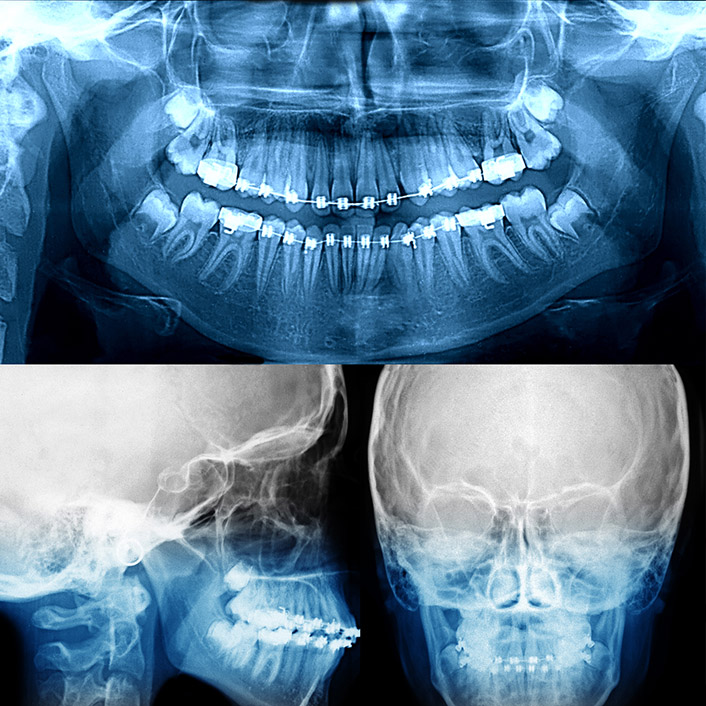
X-rays are a focused beam of x-ray particles passed through bone which produce an image on special film, showing the structure through which, it passed. This provides the familiar black and white images doctors and dentists use to diagnose problems and disease. Without an x-ray of the whole tooth and supporting bone and gum tissues, there would be no way to detect infection or pathology that requires attention.
In our office we use digital radiography which allows us to take x-rays using up to 90% less radiation than conventional film x-rays. Using this technology, we are able to take an x-ray of your mouth by using a small sensor which records the image of your teeth and sends it to a computer. The result is a highly detailed image of your mouth that can easily be enhanced to better diagnosis dental concerns and determine the very best treatment for each case.
A panoramic x-ray provides a very broad view of teeth, jaws, sinuses, jaw joints and nasal areas. They are not designed to find cavities like other x-rays. Rather, they reveal problems such as impacted teeth, bone abnormalities and fractures, infections, cysts or tumors. Because of this, they are a staple technology in any oral or maxillofacial practice.
Panoramic x-rays provide an accurate and trusted diagnosis so that the most viable treatment plans can be executed.
Ceph X-rays are generally used to diagnose developmental concerns involving the head, neck and jaw that a dentist, orthodontist or surgeon believes may be interfering with proper facial and oral development.
They are commonly used to:
Cephalometric Analysis is particularly useful in understanding the complexities of overbites and underbites, because the position or underdevelopment of the jaw plays a significant role with these concerns. Orthodontists find them invaluable in the administration of orthodontic work because they need to evaluate the movement of the teeth, and sometimes the jaw, over the course of several years. The full picture a Ceph enables them to gauge the success of the work, and the adaptation of the body to treatment.